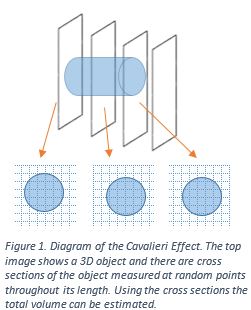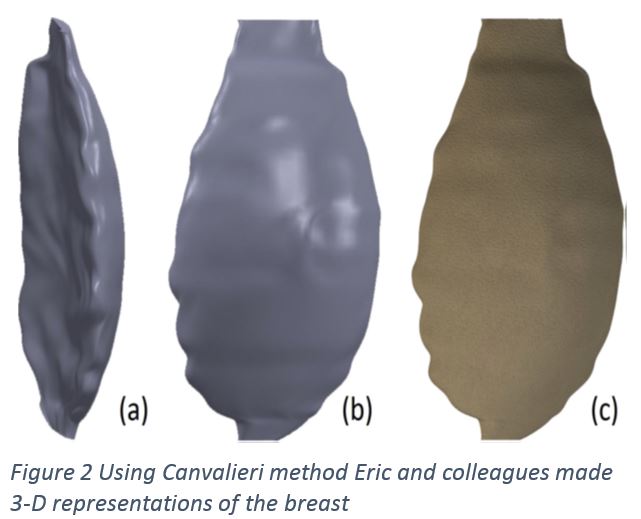Dr. Kim feels that preoperative planning before undergoing breast surgery is crucial to reducing the need for reoperation later on. Reoperations can be costly and subject patients to additional risks. Measuring the breast volume before surgery will allow the surgeon to measure the exact size needed for an implant; this is especially useful because it will account for any asymmetry. Although there are factors including breast shape, natural fluctuation in weight, menstrual, and hormonal changes that affect the repeatability and accuracy of tests such as these.

Currently there are a number of methods used for measuring breast volume including: anthropometric, Archimedes principle, Grossman-Rounder Device, negative casting, mammography or ultrasound, and 3D surface imaging (Eric). Although Eric and colleagues found that all of these methods don’t account for the tissue lateral to the pectoral folds or the breast tissue along the chest wall.
In order to improve accuracy Eric suggests using the Cavalieri method an approach that was created over 300 years ago by the mathematician Bonoventura Cavalieri (Akbas). Cavalieri had used this method to obtain volume estimates of organs by noting that the volume of an object can be estimated from a set of two dimensional parallel objects a given distance away. This is seen in figure 1 where a cylinder has numerous planes dividing it; each plane takes a cross section of the shape. Using these cross sections the volume of the cylinder can be calculated. Using MRI images an accurate and quick determination of the volume of the breast can be determined (Eric).
Last month a novel technique for breast volume was proposed that involves using mesh and no manual intervention (Seoud). The researchers wrote that it was important to find a way to calculate breast volume with the patient in the standing position, where the breast is in the position it will be in when the patient looks at themselves in the mirror. When a patient is lying down the projection of the breast will be different and it will have more lateral displacement than in the natural standing position. Using this mesh the researchers were able to create topographical maps that offered similar results when using tools that are the current standard of care.
With new technologies being suggested it is possible that if this is shown to be a more effective means of measurement that it will become the new standard. Dr. Kim feels that breast augmentation is a highly personal decision and that it is critical that his patients have as much information about the risks as possible. Being able to measure the volume of the breast can offer detailed information about what type of implant will best fit and hopefully reduce the need for reoperation. Lowering the patient’s risk and cost.

Akbas, H., Sahin, B., Eroglu, L., Odaci, E., Bilgic, S., Kaplan, S., … & Bek, Y. (2004). Estimation of breast prosthesis volume by the Cavalieri principle using magnetic resonance images. Aesthetic plastic surgery, 28(5), 275-280.
Erić, M., Anderla, A., Stefanović, D., & Drapšin, M. (2014). Breast volume estimation from systematic series of CT scans using the Cavalieri principle and 3D reconstruction. International Journal of Surgery, 12(9), 912-917.
Seoud, L., Ramsay, J., Parent, S., & Cheriet, F. (2017). A novel fully automatic measurement of apparent breast volume from trunk surface mesh. Medical Engineering & Physics.
http://what-when-how.com/proteomics/quantitative-em-techniques-proteomics/
